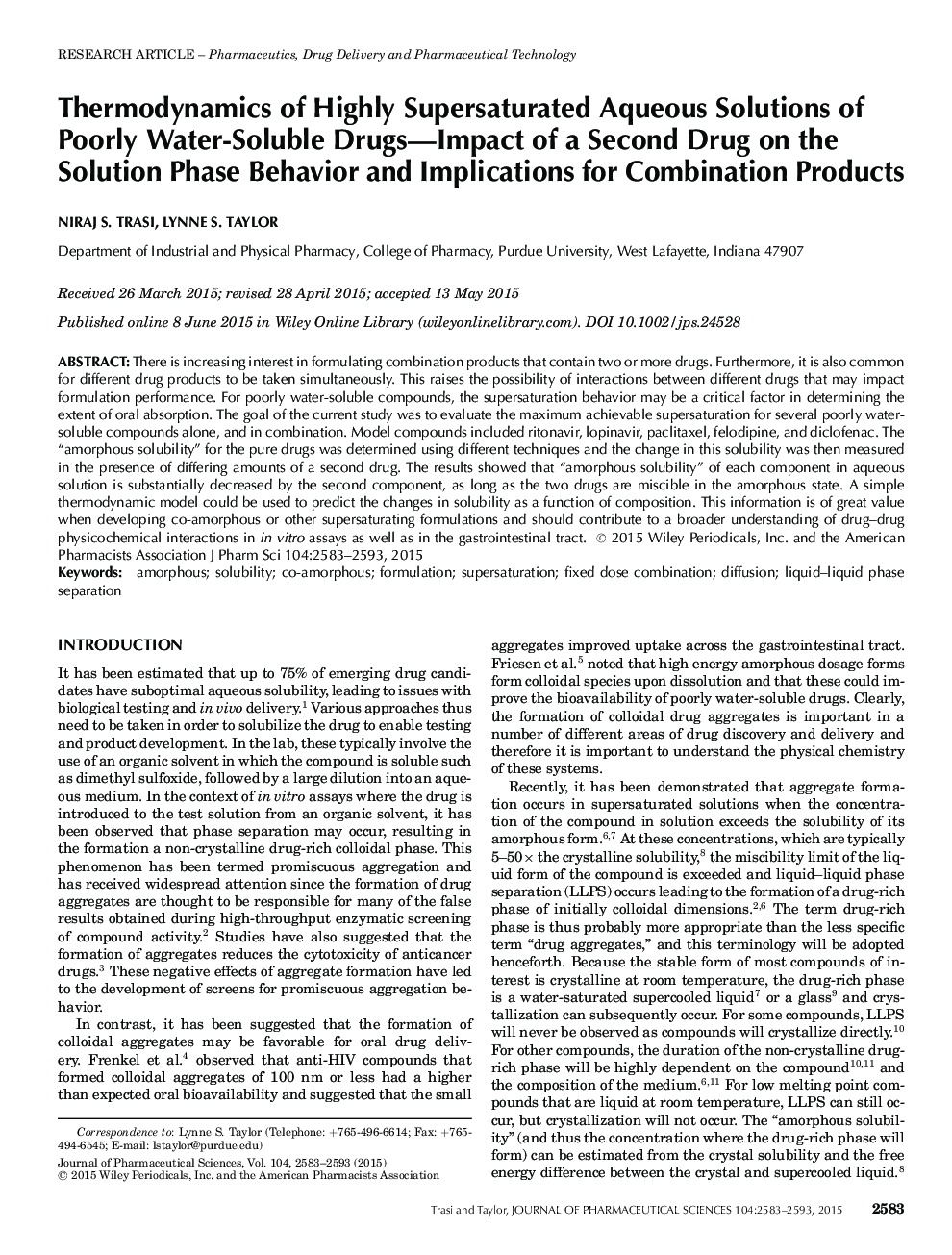| Article ID | Journal | Published Year | Pages | File Type |
|---|---|---|---|---|
| 10162027 | Journal of Pharmaceutical Sciences | 2015 | 11 Pages |
Abstract
There is increasing interest in formulating combination products that contain two or more drugs. Furthermore, it is also common for different drug products to be taken simultaneously. This raises the possibility of interactions between different drugs that may impact formulation performance. For poorly water-soluble compounds, the supersaturation behavior may be a critical factor in determining the extent of oral absorption. The goal of the current study was to evaluate the maximum achievable supersaturation for several poorly water-soluble compounds alone, and in combination. Model compounds included ritonavir, lopinavir, paclitaxel, felodipine, and diclofenac. The “amorphous solubility” for the pure drugs was determined using different techniques and the change in this solubility was then measured in the presence of differing amounts of a second drug. The results showed that “amorphous solubility” of each component in aqueous solution is substantially decreased by the second component, as long as the two drugs are miscible in the amorphous state. A simple thermodynamic model could be used to predict the changes in solubility as a function of composition. This information is of great value when developing co-amorphous or other supersaturating formulations and should contribute to a broader understanding of drug-drug physicochemical interactions in in vitro assays as well as in the gastrointestinal tract.
Keywords
Related Topics
Health Sciences
Pharmacology, Toxicology and Pharmaceutical Science
Drug Discovery
Authors
Niraj S. Trasi, Lynne S. Taylor,
